#stem-mammal
Text
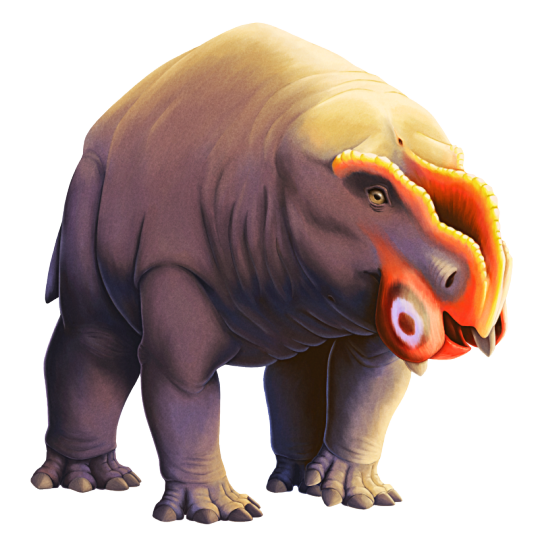
Rechnisaurus cristarhynchus here was a member of the dicynodonts, a group of stocky herbivorous beaky-jawed synapsids that were distantly related to modern mammals. Living in what is now eastern India during the Middle Triassic, about 247-242 million years ago, it's only known from a single fossil skull – but based on the body proportions of better-known close relatives like Kannemeyeria it was probably somewhere around 1.2m long (~4').
It had a raised bony crest running down the middle of its snout, with deep bowl-like depressions on either side that probably served to make the crest seem visually larger it already was. (They probably didn't house any weird soft-tissue structures, however, since these type of dicynodonts tended to have very extensive keratinous coverings over their snouts.)
It also had raised bony areas around its parietal eye, and extensive bony flanges covering most of its tusks giving its face a sort of jowly appearance. All these features were probably for visual display and may have been brightly colored in life.
And, while I usually like to reconstruct dicynodonts as extensively fluffy… recently some fossil specimens of Lystrosaurus have been found showing bumpy leathery skin impressions. This doesn't necessarily mean that all dicynodonts were hairless (especially since there are still those Permian coprolites), but since kannemeyeriiformes like Rechnisaurus were quite closely related to Lystrosaurus, I've gone with no fuzz at all on this one.
———
NixIllustration.com | Tumblr | Twitter | Patreon
#science illustration#paleontology#paleoart#palaeoblr#rechnisaurus#kannemeyeriiformes#dicynodont#anomodoniat#therapsid#synapsid#stem-mammal#art
376 notes
·
View notes
Text
If you were to host a blacklight party in the taxidermy wing of a natural history museum, most of the mammals would fit right in with their eerie fluorescent glow.
That's what Kenny Travouillon, the curator of mammalogy at the Western Australian Museum, found when his team shone ultraviolet light on 125 species of mammal in the collection.
The luminous effect wasn't restricted to platypuses and wombats, which were identified as biofluorescent species a few years ago. Every species of mammal they examined emitted a green, blue, pink, or white hue under UV light.
The inside of a red fox's pointy ears turned shocking, fluorescent green. The polar bear lit up like a white t-shirt under a blacklight, as did the zebra's white stripes and the leopard's yellow fur.
The wings of the orange leaf-nosed bat became a stark white skeleton, while its fur glowed pink. And the ears and tail of the greater bilby shone "bright like a diamond," as Travouillon described in 2020.
The study showed that fluorescence is present in half of mammalian families, almost all clades, and in all 27 orders.
Continue Reading
2K notes
·
View notes
Text


Result from the Tiaojishan formation #paleostream! We had a closer look at the arboreal fauna of this formation
Also some close ups
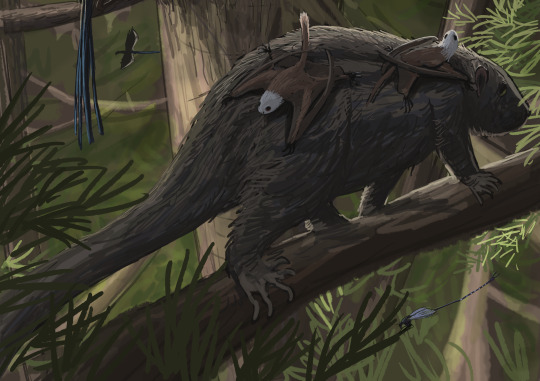
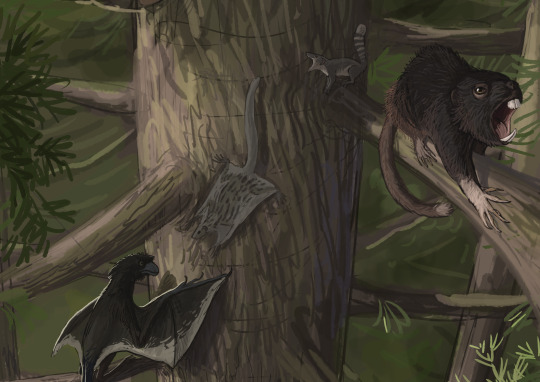

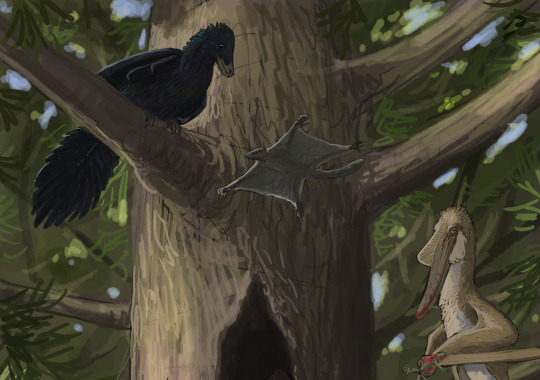
#sciart#paleoart#paleostream#palaeoblr#dinosaur#jurassic#pterosaur#caihong#anurognathids#stem birds#mammals#gliding bois#arboreal#jurassic forest#tiaojishan
855 notes
·
View notes
Text
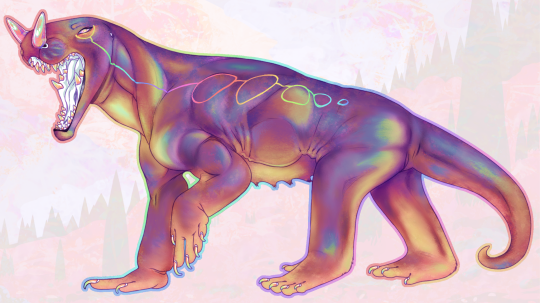
a long time ago youd have called her "mom" !
#gorgonopsid#paleoart#inostrancevia#pelycosaur#gorgonops#synapsid#stem mammal#mammal like reptile#adoptable#character design#rainbow
464 notes
·
View notes
Text
Paleostream 9/09/2023
results of today's Paleostream
today we drew Anomocephalus, Praepinacoceras, Arthropleura (in the back), and Brachiosuchus!
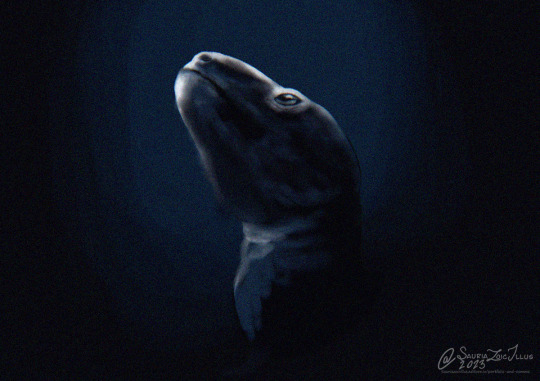



#digital art#paleoart#paleontology#artists on tumblr#digital artwork#palaeoart#digital illustration#sciart#id in alt text#crocodile#arthropleura#ammonite#stem mammal
151 notes
·
View notes
Text
#science#science communication#scicomm#stem#science education#science blog#biology#marine ecosystem#marine biology#marine mammals#marine life#lgbtqia#lgbt pride#lgbtq community#lgbtq
22 notes
·
View notes
Note
I personally call Dimetrodon and early synapsids like that "mammaloids" to differentiate them from the diapsid lineage (which I call reptiles for the sake of convenience). This linguistically makes sense to me because if humans are humanoid, then mammals are mammaloid.
Ooh I like that. I usually go with stem-mammals in most situations, but mammaloid is a great word
47 notes
·
View notes
Text

Kollikodon Presents: Hot Cross Bunodon WIP
GAHHHH!! So close to Easter! I juuuuust missed it! Maybe I can make it presentable tomorrow? maybe...
#my art#paleoart#hot cross buns#WIP#easter#Kollikodon#stem monotreme#mammal#animal#chordata#chordate#paleoblr#bread rolls#hotcrossbunodon#bunodon#teeth#mesozoic#mesozoic mammals#bread#australian prehistory#lightning ridge#did she lay those eggs in the background? Whooooo knoooows???#prehistoric mammals#palaeontology#paleontology#digital art#eggs#easter egg
9 notes
·
View notes
Text
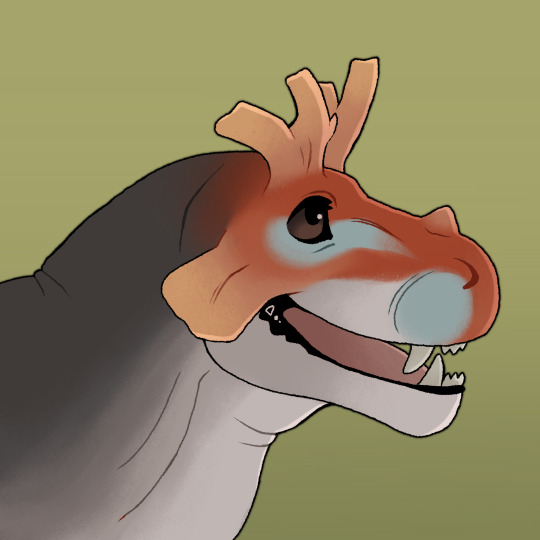
I’m trying to get back into drawing paleo art. Here’s a happy estemmenosuchus
#my art#estemmenosuchus#paleoart#paleontology#paleobr#permian#synapsids#therapsid#stem mammals#digital aritst
24 notes
·
View notes
Text
also dimetrodon is closer related to you and me than it is to dinosaurs

this is your evolutionary weird aunt put respect on her name
#/thats a big joke btw#since its (as far as im aware) a pelycosaur and not directly related to the line mammals stem from#however much like the therapsids (which we are technically a part of) theyre synapsids so#im seeing this as reason enough for the joke#however the first bit is true#due to being a synapsid and not a sauropsid its cliser related to you and me than dinosaurs
15 notes
·
View notes
Text
2022 Reading Log pt. 21
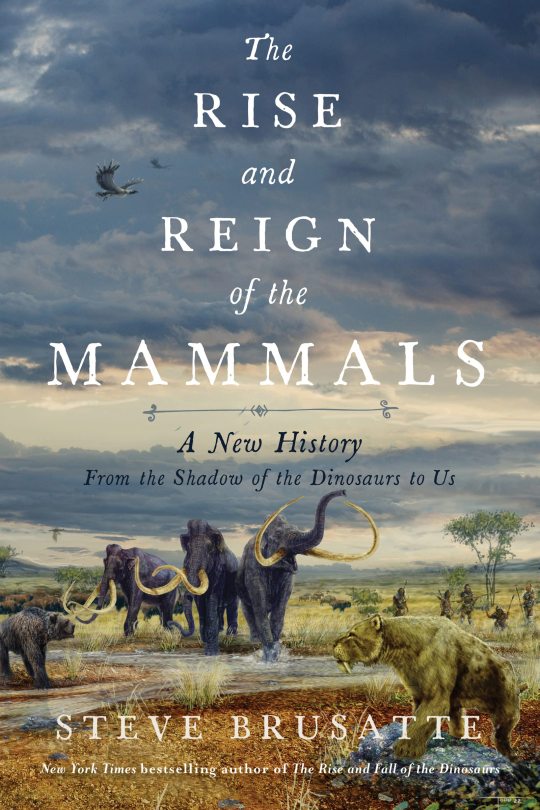
101. The Rise and Reign of the Mammals by Steve Brusatte. This book covers mammalian evolution throughout synapsid history, starting in the Carboniferous and ending in the present day. There’s a lot of good information in here, both about the species themselves and the history of their discovery and discoverers. But I found the authorial voice consistently off-putting. Brusatte writes about evolution alternately like a war or a poker game, and there are constant references to dominating, beating or tricking other lineages, particularly dinosaurs. After crowing about how mammals survived and thrived in the Mesozoic by exploiting small body sizes and niches like eating seeds and insects, he dismisses all of bird evolution (which in the Cenozoic did the same thing) in a paragraph, and never talks about Cenozoic animals other than mammals at all. What’s weird is I don’t remember his previous book, The Rise and Fall of Dinosaurs, being so mercilessly jingoistic about its focus clade. Maybe the publisher told him to write more enthusiastically about a “less exciting” group; maybe it’s the zeal of the newly converted (Brusatte was primarily a dinosaur paleontologist until relatively recently); maybe the first book was this annoyingly written and I have forgotten.

102. The Accidental Ecosystem by Peter S. Alagona. This book is a short overview about how wild animals have moved into American cities, why American cities developed into places where animals can thrive, how humans are reacting to these and how we should in the future. The tone is generally optimistic but realistic—that cities can serve as oases of biodiversity during climate change and extinction events, but a world with only rats, crows and sparrows would be a depauperate one. Most of the book is organized around an incident of some charismatic megafauna making the news (like Pedals the bipedal bear of New Jersey, or a nesting pair of bald eagles blithely feeding their chicks fresh kitten), and then talking about that species in greater context. I’ve read several other books recently about human/animal interactions, and this one did the best job at being inclusive, talking about how parks can and have been used as agents of gentrification, the impact of economic decisions on the fate of cities and animals alike, and existing biases within ecology and evolutionary studies. Highly recommended.
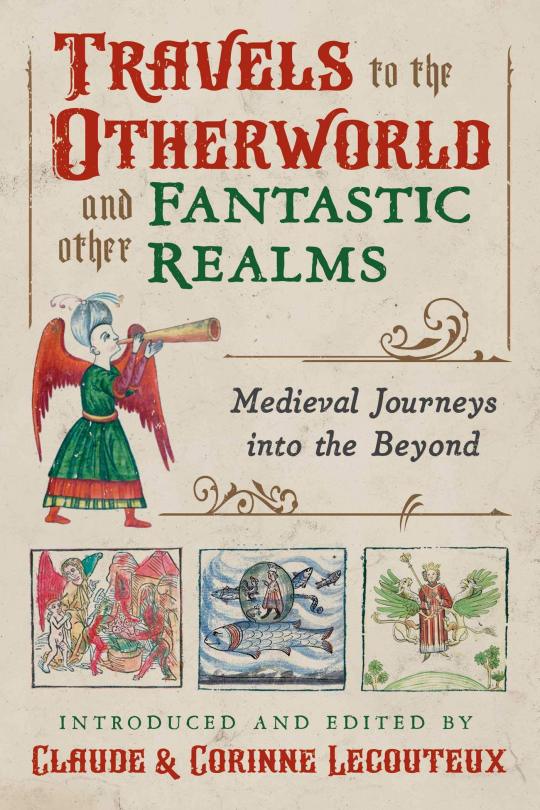
103. Travels to the Otherworld and other Fantastic Realms, edited by Claude and Corinne Lecouteux, translated by Jon E. Graham. This is a collection of medieval European fantastic literature, although not all of it is necessarily fantasy in the modern sense. Some are religious visions, others historical fantasies, others excerpts from novels and folk tales. All of them are wild. Both as a look into the medieval mindset and for their various bizarre creatures and occurrences. Some highlights include multiple versions of the adventures of Alexander the Great, the Vision of Tundale, a German journey through Hell that’s much gnarlier than anything in Dante, and the adventures of Marcolf, the Sherlock Holmes to King Solomon’s Watson (!). Also highly recommended; this might be the most fun I’ve had with a book this year.

104. Empire of the Scalpel: The History of Surgery by Ira Rutkow. Just what it says on the cover. The book starts with trepanations of cavemen and progresses to the modern era. Rutkow follows the Great Man school of history, and many of the chapters are biographical sketches of a surgeon who was important in developing the field. It feels somewhat incomplete—not only are non-surgical advances in medicine basically ignored, the development of the modern American insurance state is glossed over, even as the book discusses how hospitals became prestigious institutions and surgeons very wealthy. The book also uses weird kennings, as if it were written by an Icelandic skald—surgeons are “scalpel wielders” or “students of the knife”, etc, as often as they’re just surgeons. I definitely learned stuff from this book (like the quack “orifical surgery”, which posed that all diseases could be cured by cutting out irregular shapes from the mouth, nose, anus and genital openings!), but found the book rather less than the sum of its parts.
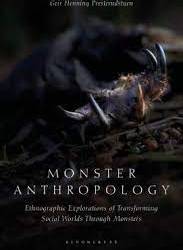
105. Monster Anthropology, edited by Yasmine Musharbash and GH Presterudstuen. This is a collection of academic essays about monsters as cultural signifiers and participants. After a very good introduction (the Works Cited of which will keep me busy a long while), the bulk of the book looks at particular cultures and particular monsters. The book was published in Australia, and several of the essays are on the same group of Indigenous Australians, the Warlpiri, and their monsters (most of which have not penetrated Western consciousness, but the pankarlangu is starting to make some inroads). One minor note I found interesting—there’s an actual folkloric monster that fits the D&D concept of a rakshasa! The tepun of the Eastern Penan people in Borneo is a shapeshifting hedonist that has aspects of humans and tigers.
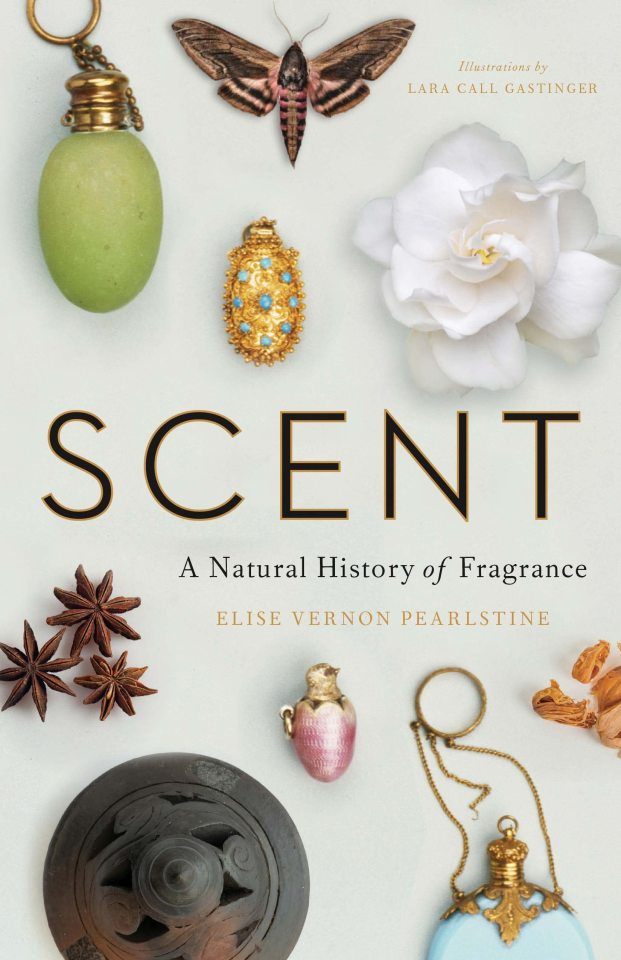
106. Scent: A Natural History of Fragrance by Elise Vernon Pearlstine. Gave up on 50 pages in. The book purports to be a natural history—what molecules are made by what plants, why, and how those plants live. The actual contents contain some of that, but much more cultural histories. I’ve read and enjoyed several books about the cultural history of plants recently, so I’m not inherently opposed to the concept. But the book is incredibly poorly organized. The narrative skips back and forth through time and space and species, words are used and then defined several pages later as if it’s the first time we’re seeing them, concepts will be repeated multiple times to the point of redundancy, and the preface and introduction contain the exact same sentences, twice! The fact that this book was published in this state is frankly embarrassing.
#reading log#bad books#botany#cultural history#paleontology#stem mammals#prehistoric mammals#anthropology#monster books#surgery#medical history#european folklore#medieval folklore#ecology#urban ecology
91 notes
·
View notes
Photo

The synapsids were an incredibly successful and diverse group during the Permian period, but after the devastating "Great Dying" mass extinction event 252 million years ago only three lineages survived into the Triassic – the cynodonts (close relatives and ancestors of modern mammals), the dicynodonts (beaked tusked weirdos who briefly took over the world), and the therocephalians.
Therocephalians were close relatives of cynodonts, and convergently evolved several very mammal-like anatomical features in their skulls, teeth, and limbs. But unlike their cousins this lineage never fully recovered in the Triassic, and they ultimately disappeared completely around 242 million years ago.
Ericiolacerta parva was one of these short-lived Mesozoic therocephalians, known from the early Triassic (~252-247 million years ago) of South Africa and Antarctica, in regions that were connected at the time as part of the supercontinent of Pangaea. It was a fairly small animal, about 20cm long (~8"), with small sharp teeth that indicate it mainly fed on insects, and semi-opposable thumbs and inner toes that suggest it was also a capable climber.
Holes in the bones of its snout would have carried numerous nerves and blood vessels, which may be evidence of sensitive fleshy lips and possibly whiskers. And while there's no direct evidence of fur in therocephalians, they do appear to have been active warm-blooded animals – and possible fossilized synapsid hair from the Permian period suggests fuzziness might have been ancestral to all of the "protomammal" lineages that survived into the Triassic.
———
Nix Illustration | Tumblr | Twitter | Patreon
#science illustration#paleontology#paleoart#palaeoblr#ericiolacerta#ericiolacertidae#baurioidea#therocephalia#eutheriodontia#therapsid#synapsid#stem-mammal#protomammal#art#stop shrink-wrapping synapsids#weird dog
434 notes
·
View notes
Text
Mammals will most likely be wiped from the face of the Earth by our planet's next supercontinent, a new study has revealed.
By modeling the heat tolerance of mammals alongside Earth's climatic conditions 250 million years into the future, scientists have discovered that the formation of the most probable next supercontinent — called Pangaea Ultima — will bring about the likely extinction of our animal order.
The researchers made the prediction using a climate model that factored in the changes to land surface temperature of a new supercontinent; alongside increases to the intensity of the sun's radiation and carbon dioxide in the atmosphere. The study was published Sept. 25 in the journal Nature Geoscience.
"A supercontinent seemingly creates conditions that more easily lead to mass extinction," first-author Alexander Farnsworth, a climatologist at the University of Bristol in the U.K. told Live Science. "[Supercontinent formation] has coincided with four of the last five mass extinctions in the geologic past."
Continue Reading.
150 notes
·
View notes
Text
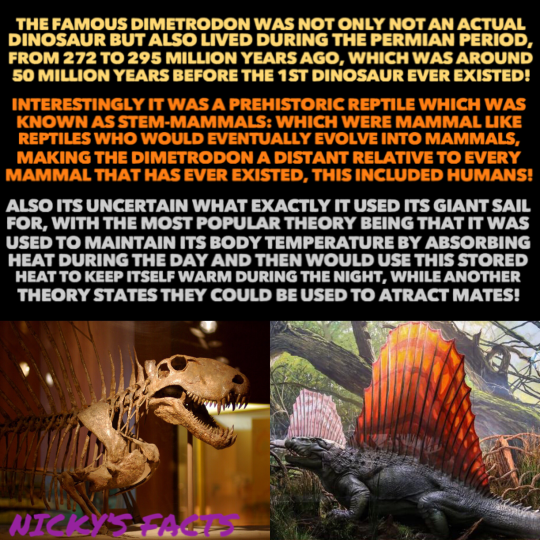
Say hello to your great great great great great great... great grandmother!
💜
#history#dimetrodon#jurassic world#mammals#extinct animals#jw#permian period#stem mammals#jurassic world evolution#human ancestor#jwe#extinct#related to humans#prehistoric kingdom#jurassic park fan#prehistoric animals#evolution#prehistoric#walking with monsters#zoo tycoon 2#zt2#prehistoric reptile#ancestors#nickys facts
63 notes
·
View notes
Note
Can I just say that you have a very neat looking sona? :)

Thank you! I draw myself as one of my favorite animals that ever lived. Gorgonopsid Inostrancevia! A late Permian therapsid that lived and died out long before the dinosaurs and one if the largest of the gorgonopsians.
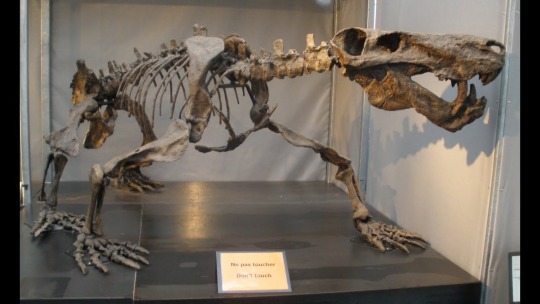
Science hour with herbecritters!
Amniotes, land animals that arose in the Devonian period, characterized by being able to form fetal tissue known as an amniote (essentially animals that develop an egg within a uterus). These amniotes split off into two groups, the sauropsids (birds and other reptiles) and the synapsids (mammals and their now extinct relatives), therapsids were one of the synapsid lineages that came about in the Permian period 298 million years ago. Synapsids, like you, me, the gorgonopsids, and all mammals alive today, have a single temporal fenestra behind the eye socket, whereas sauropsids have either two (the diapsids) or none (the anapsids). Diapsids contain all birds and reptiles alive today, anapsids contain extinct organisms though there is some debate as to whether turtles are considered from the diapsid lineage or the anapsid lineage (it confuses me too, but I honestly haven’t studied turtles enough to have a valuable opinion on it).

Anyways, therapsids are really cool and I love them! It’s thanks to the few little therapsids known as the cynodonts that survived the end-Permian extinction (the greatest mass extinction in earths history, also known as The Great Dying) and branched off into true mammals throughout the Mesozoic that you and I exist today.
#sorry I just really really love paleontology#I’m a Paleozoic kinda bitch too#dinosaurs are cool and all but stem mammals are my SHIT#I love em!#back to htf sorry bout that#asks#paleo
30 notes
·
View notes
Text
Paleostream 8/07/2023

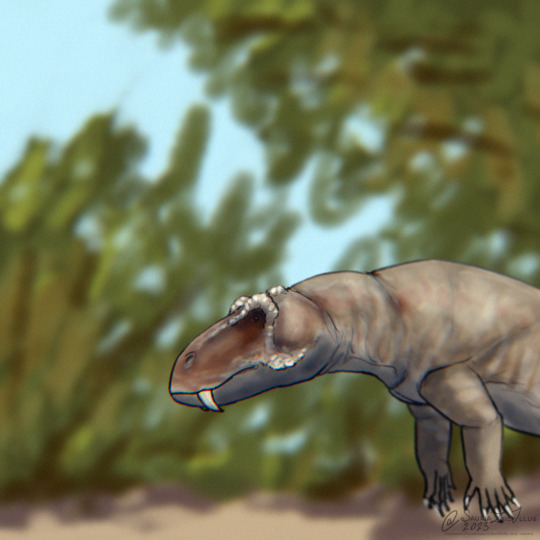
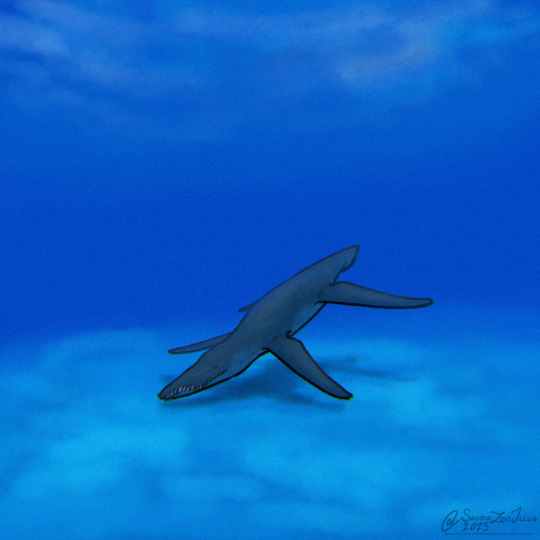

results of today's paleostream!
today we drew Cacops, Pliosaurus, Pampaphoneus, and Ufudocylops (mine is a juvenile with cyclopia)
#paleostream#digital art#digital illustration#palaeoart#paleoart#paleontology#sciart#artists on tumblr#digital artwork#marine reptile#stem mammal#amphibian#cyclopia#id in alt text
191 notes
·
View notes